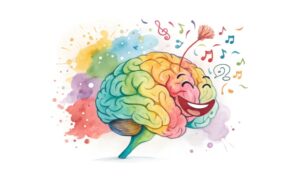In developed countries, the use of electronic health records (EHRs) in medical practice has long become a norm. In England, New Zealand, and the USA, more than 90% of doctors use EHRs. Some European countries show a lower rate of EHR implementation, which is up to 80%. If you are planning to introduce this technology in your clinic, you should consider the prerequisites for EHR software development.
The importance of EHR software development
An electronic health record (EHR) is software that contains general and specific information on a patient’s health status. The application includes such data as:
- contact information;
- health insurance information;
- medical history;
- chronic diseases;
- list of vaccinations;
- results of laboratory tests;
- X-rays;
- allergies to medications and other data.
It is difficult to store, manually process and manage all these data. Handwritten recommendations are difficult to read, which leads to numerous medical errors and cases of malpractice. According to a Swiss university hospital study, the number of prescription errors was 37%, transcription errors constituted 53%, and administration documentation errors made up 10%.
To increase the efficiency of medical services, healthcare institutions implement EHRs. The application stores important patient data so that doctors can easily find the necessary information and prescribe the right treatment.
Key components of an Electronic Health Record
Since the 1960s, when the idea of an electronic medical record emerged for the first time, EMRs have come a long way. First software solutions appeared in the 1990s. Since then, these simple digital documents have been substantially updated and gained the status of interactive “partners” of doctors and healthcare facilities. Currently, they are used alongside electronic health records (EHRs). EHR is a broader concept, it is a complex software system with a variety of functions. Here you can find the list of the most important EHR features:
-
Data collection
It is the main EHR function that helps clinics to manage health data. The application collects and stores the following information:
- demographic data (sex, race, age);
- diagnoses and medical histories;
- genetic information;
- vital signs;
- list of vaccinations;
- list of prescribed medications;
- chronic diseases and allergies;
- results of laboratory tests;
- list of screenings;
- social data (income level, profession), etc.
Certain EHRs are linked to telemedicine applications. They allow patients to enter the information on physical activities, sleep quality, complaints, and data collected from IoT devices. This feature helps to monitor a patient’s state of health remotely and adjust the treatment regimen if necessary.
-
e-Prescribing (eRx)
The ongoing pandemic has provoked the spread of social distancing. People don’t want to risk their health and visit clinics without an urgent need. In cases of mild illnesses, they prefer to consult doctors online so as not to contract COVID-19 at a healthcare facility.
That is why eRx has become a common practice. An electronic prescription is integrated into an EHR to make it easier for doctors to prescribe medications. Thus, a physician monitors the stages of treatment, analyzes the progression, and prescribes drugs. A patient sends an e-prescription to a pharmacy with the help of a digital platform and collects his/her order when it is ready.
-
Laboratory interface
Approximately 70% of medical decisions are based on the results of laboratory tests. Therefore, EHRs must support lab interfaces. EHRs allow doctors to request laboratory results as tables, charts, or text reports. Healthcare professionals view these reports, comment on them, and share the results with their patients.
-
Billing
To make the billing more convenient, it is important to integrate the account management function in the EHR system. It can be embedded in the platform. Another way is to link an EHR with a billing app through an API. The system must be able to process credit cards and save payment details. This is to guarantee that clients will pay for services without embarrassing reminders.
-
Making appointments online
The Kyruus study has shown that 43% of patients prefer to make appointments online, and the number of such users keeps growing. Thus, it is necessary to integrate this component in an EHR for convenience. A patient should be allowed to see the doctors’ working schedule, choose the right specialist, and make an appointment.
The system will schedule the date by adding it to a special calendar. It will remind a patient about the appointment in advance via push notifications, email, or SMS. This way EHRs may prevent patients from no-shows and protect clinics from losing money.
-
Clinical decision support
How can a doctor monitor when a 60-year-old female patient needs a mammogram, and a diabetic needs the A1c test? It is enough to set reminders for each patient in the EHR system. An even more advanced level is when these alerts are sent to certain patients warning them about scheduled examinations. For example, people in their 60s get notifications that the vaccination against influenza starts in November. It is possible to configure such notifications for each group of patients.
-
Sharing medical data
EHRs differ from electronic medical records (EMRs) as they allow clinics, laboratories, and pharmacies to share information. Doctors share research results, request referrals, and send messages via email or instant messengers. For a patient, such mobility means that s/he gets access to high-quality care in any clinic by allowing physicians to access his/her health data. Doctors analyze the EHR information, consider chronic diseases, past illnesses, and genetic predispositions, and define what treatment will be the best for this or that patient.
-
Reporting
EHRs are used not only for collecting and storing medical data but also for their analysis. Healthcare facilities use the reporting function to analyze their clinical and financial performance. As a rule, organizations need two types of reports:
- Population health assessment. This information allows doctors to monitor population health, adjust the vaccination schedule to the present-day demands, and control the spread of viruses.
- Administrative processes reporting is used to analyze the business activities of medical institutions. Clinics evaluate scheduling, patient care, billing, and time management tools and make necessary adjustments.
With the help of the reporting function, organizations find problem areas in their work, correct mistakes, and improve the quality of medical services.
Conclusion
When planning to develop EHR software, one should keep in mind its key components. They will help to effectively manage the workflow of a healthcare facility and improve patient care. In some cases, the clinic revenue increases by at least 11% whereas the hospital admission rate decreases by 20% and more.
To implement an EHR system successfully, it is necessary to cooperate with an experienced healthcare software development company. Such an IT partner has enough knowledge and expertise to implement the functionality and determine what technologies should be used to integrate the EHR in clinical processes and link it with other applications. It will also ensure HIPAA and GPDR compliance and protect patient data from fraudsters.



































